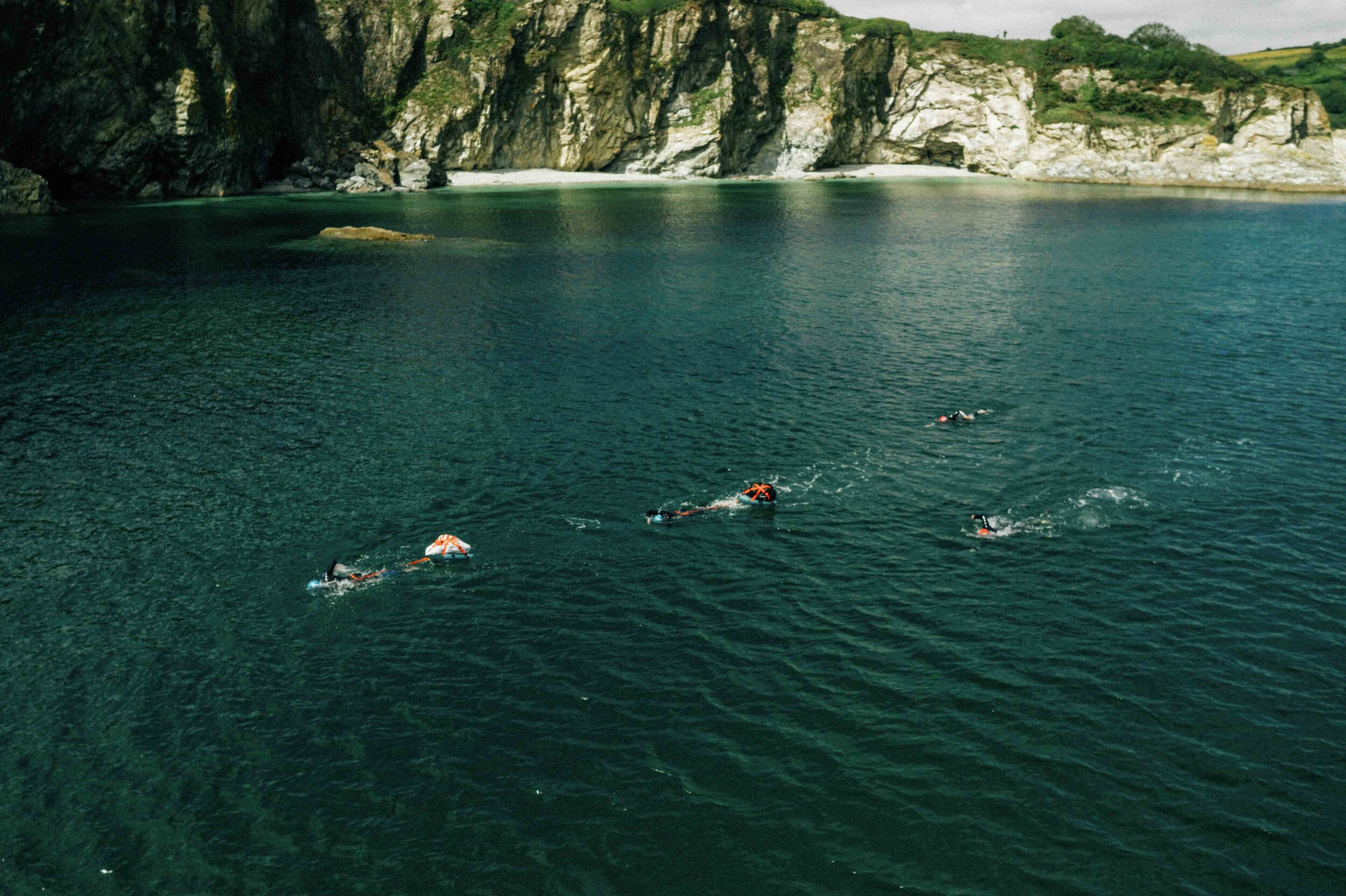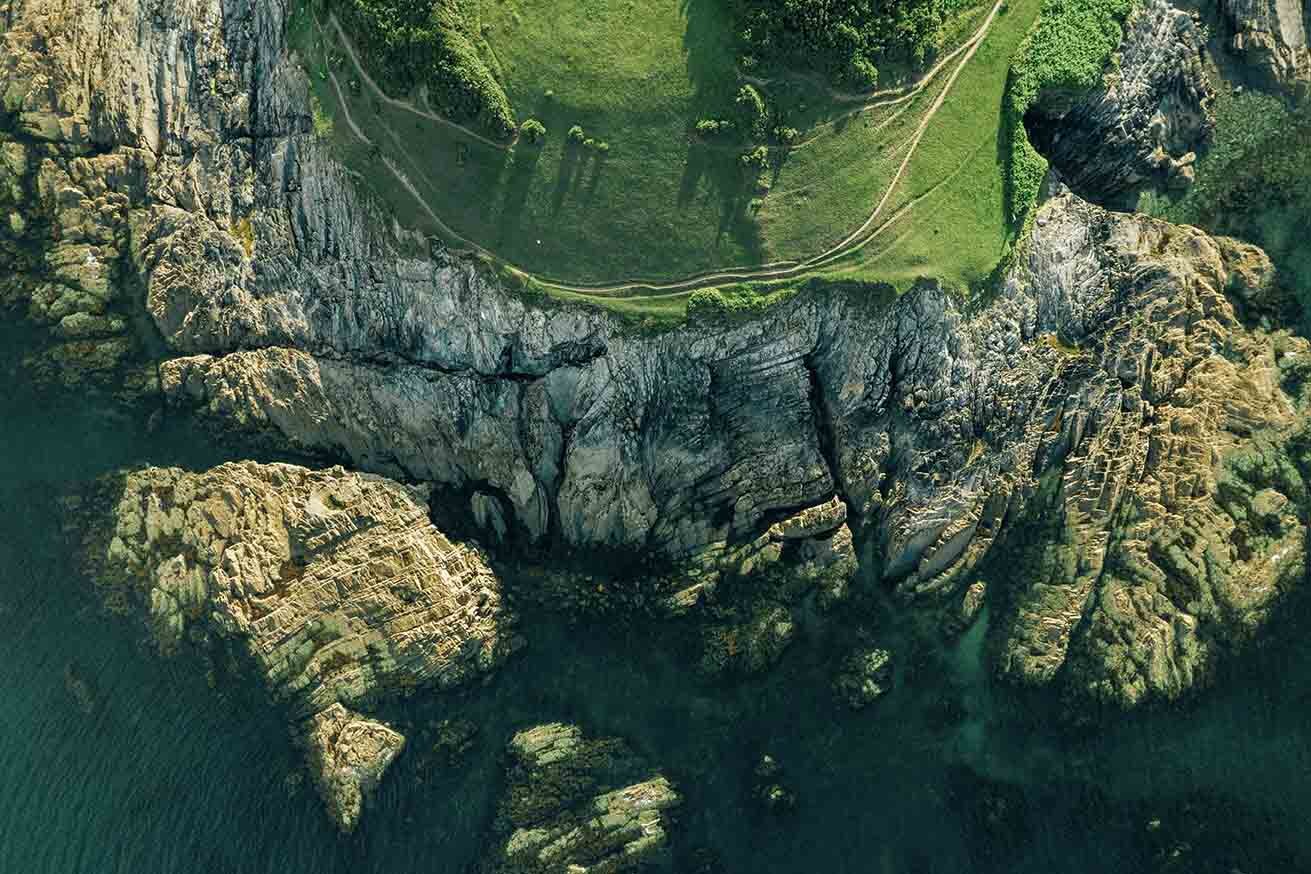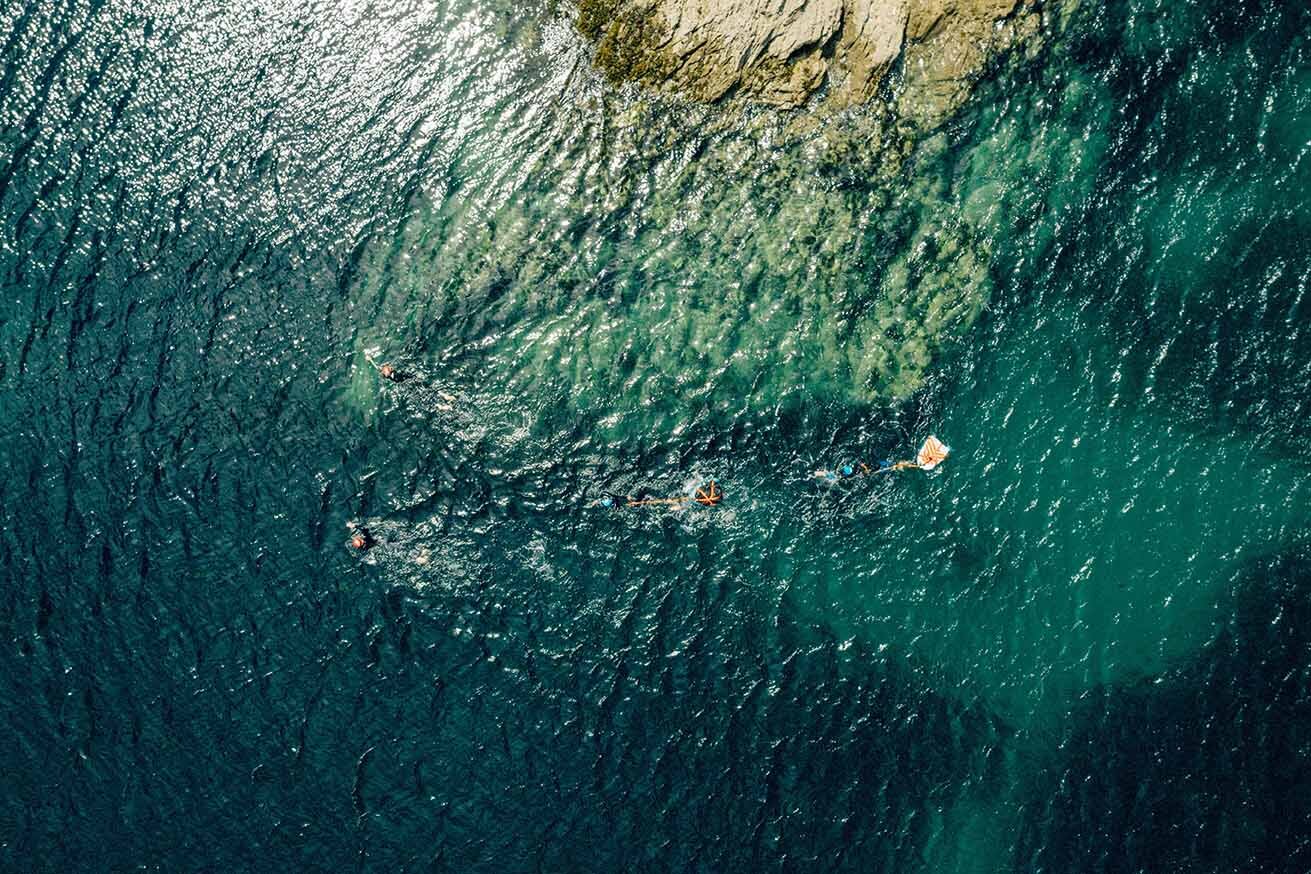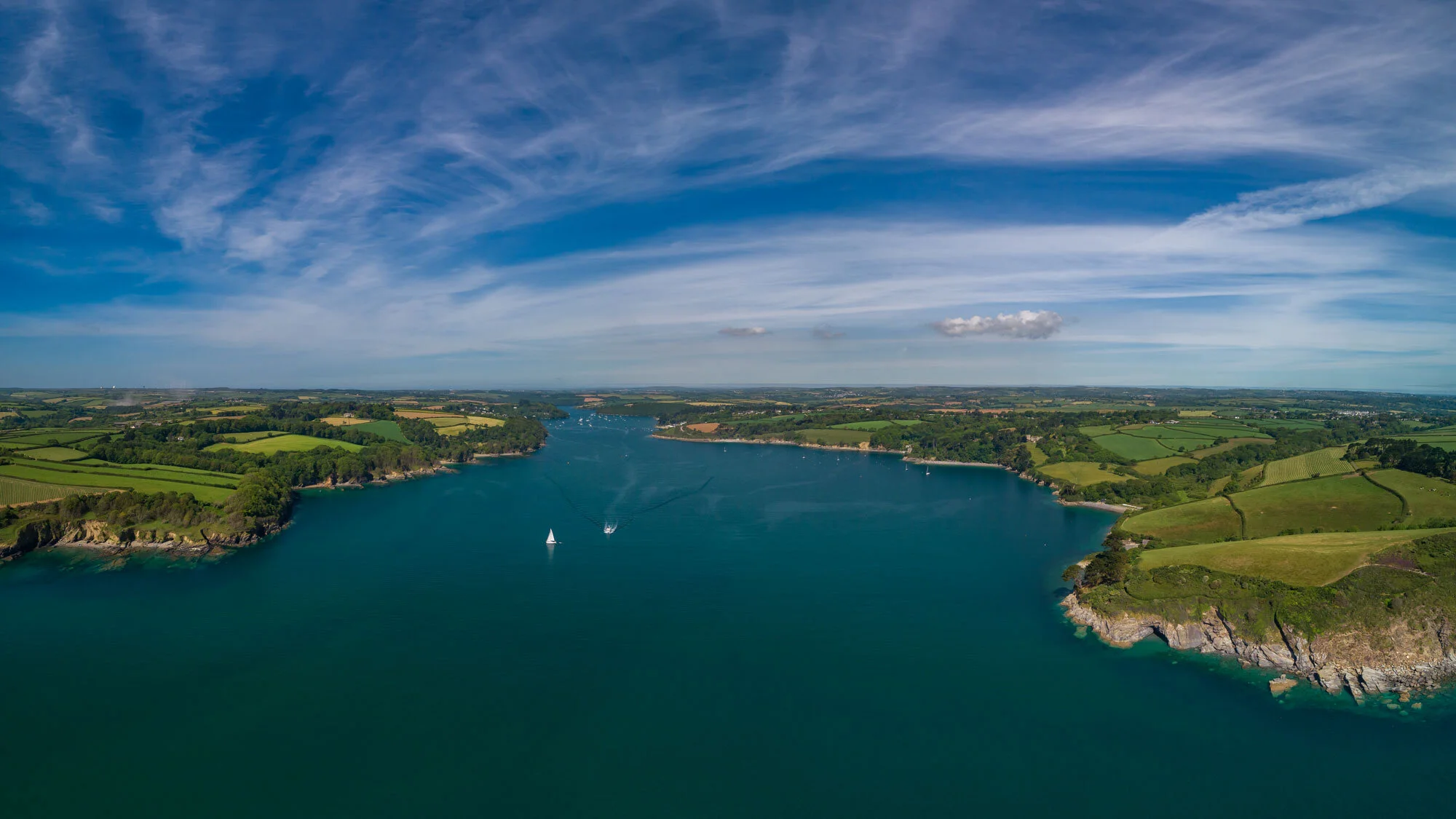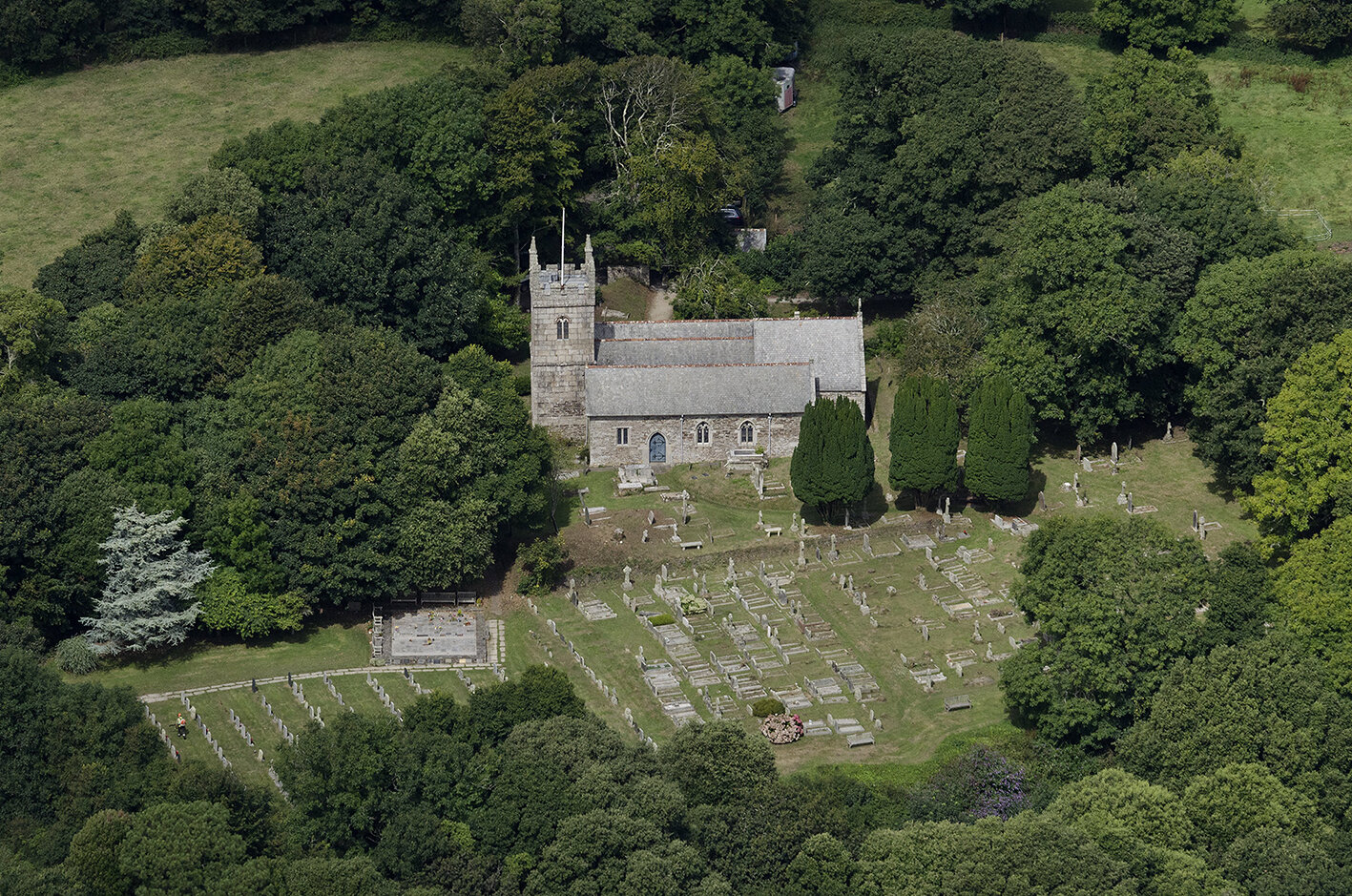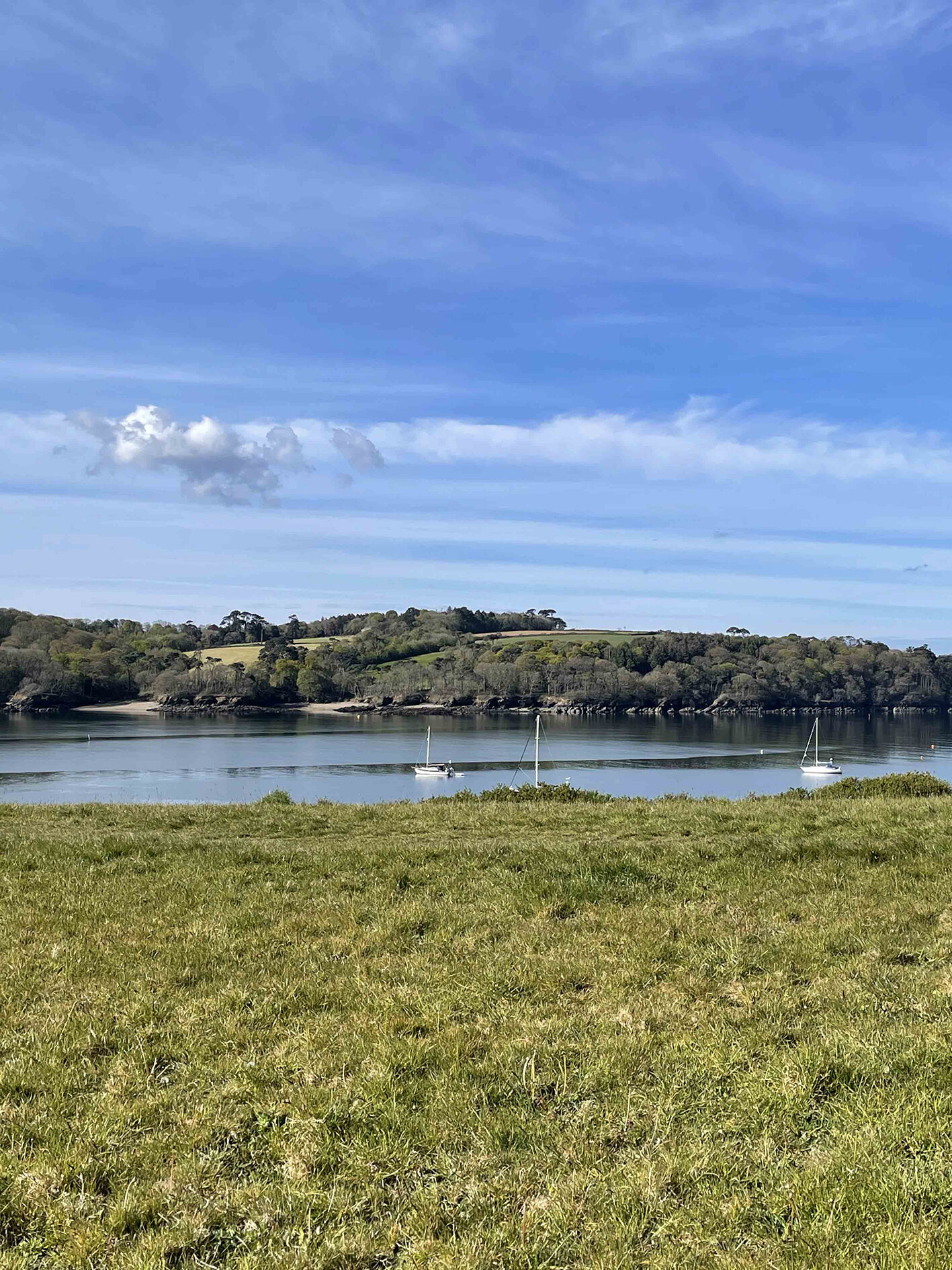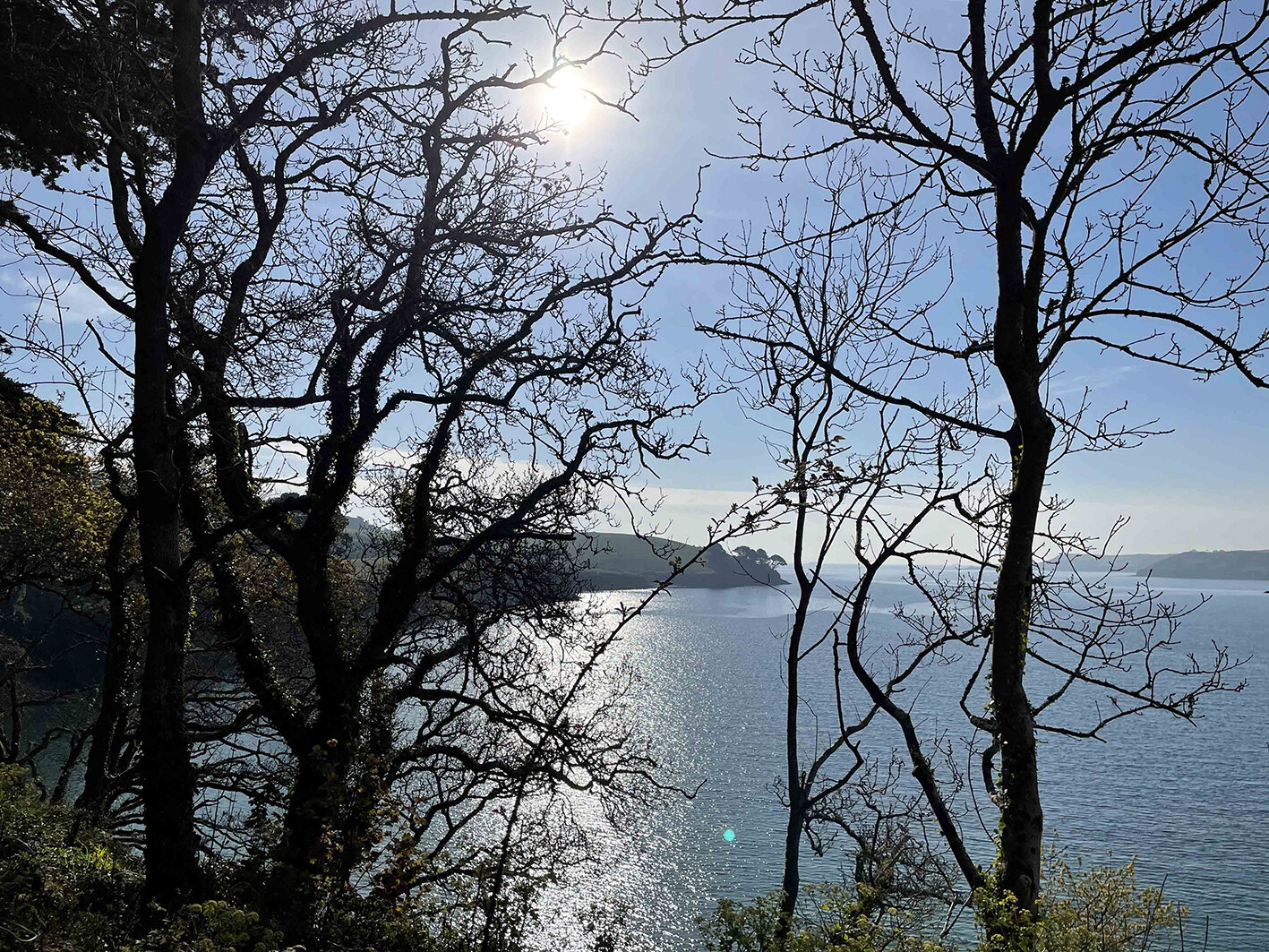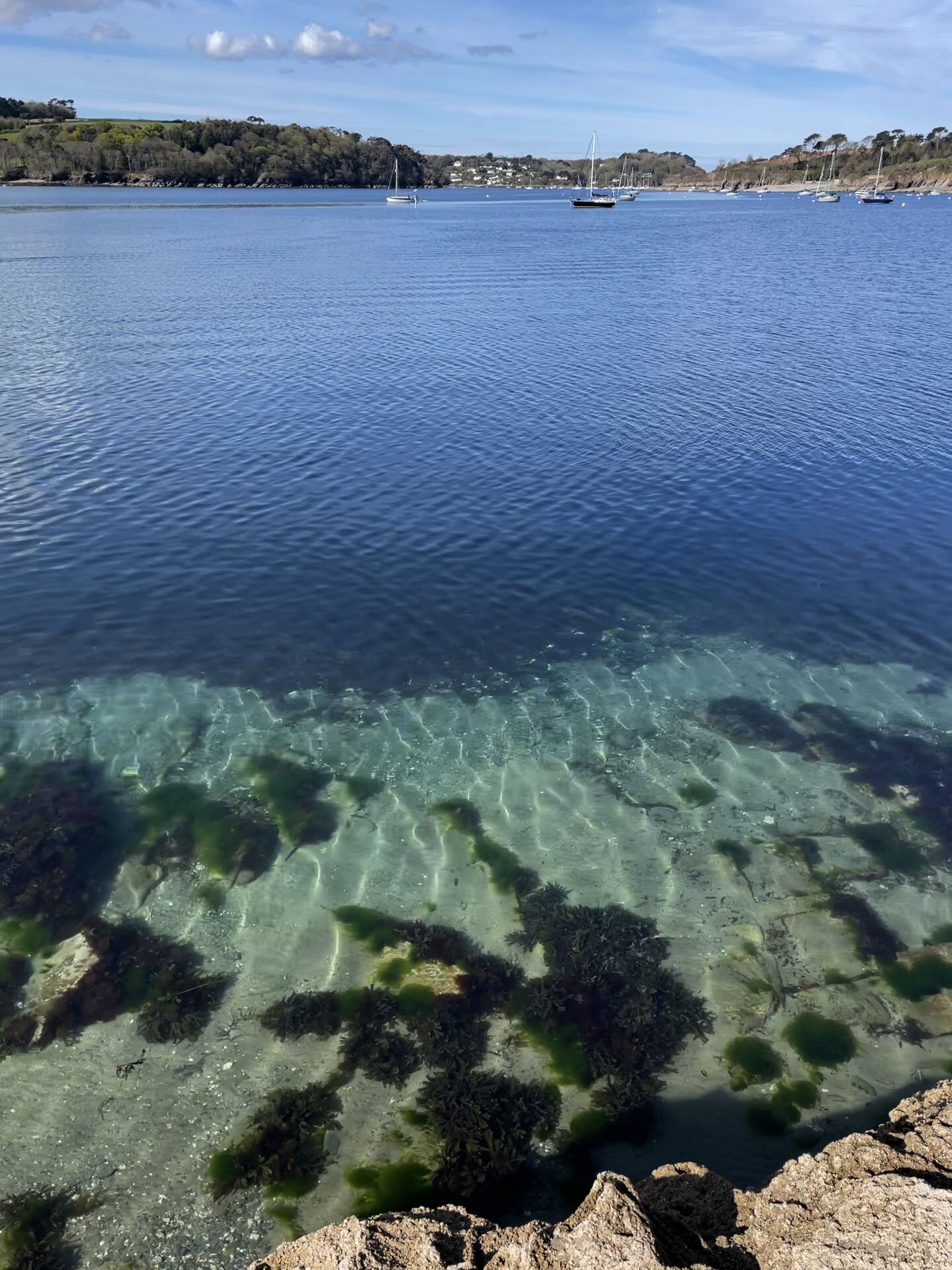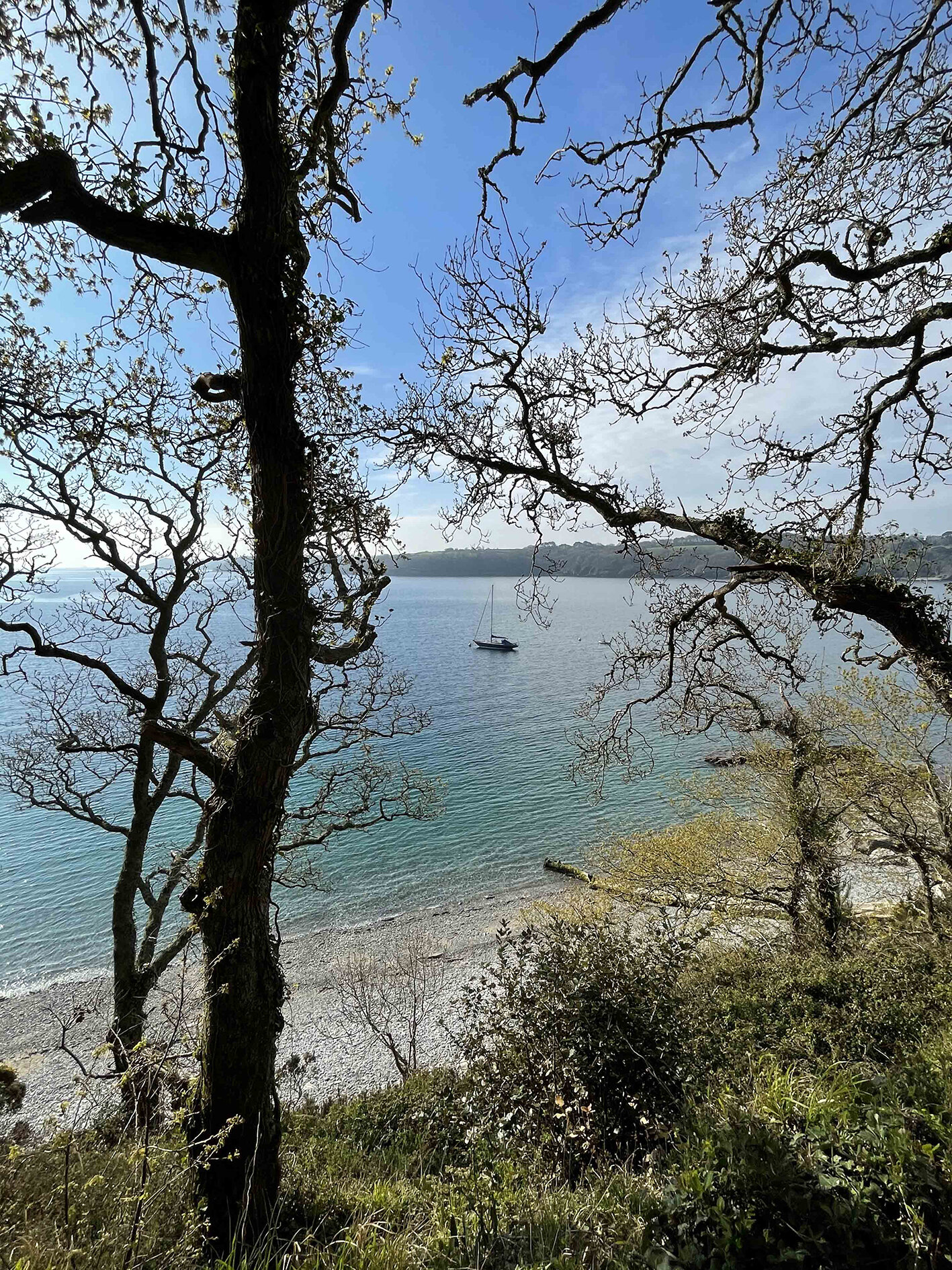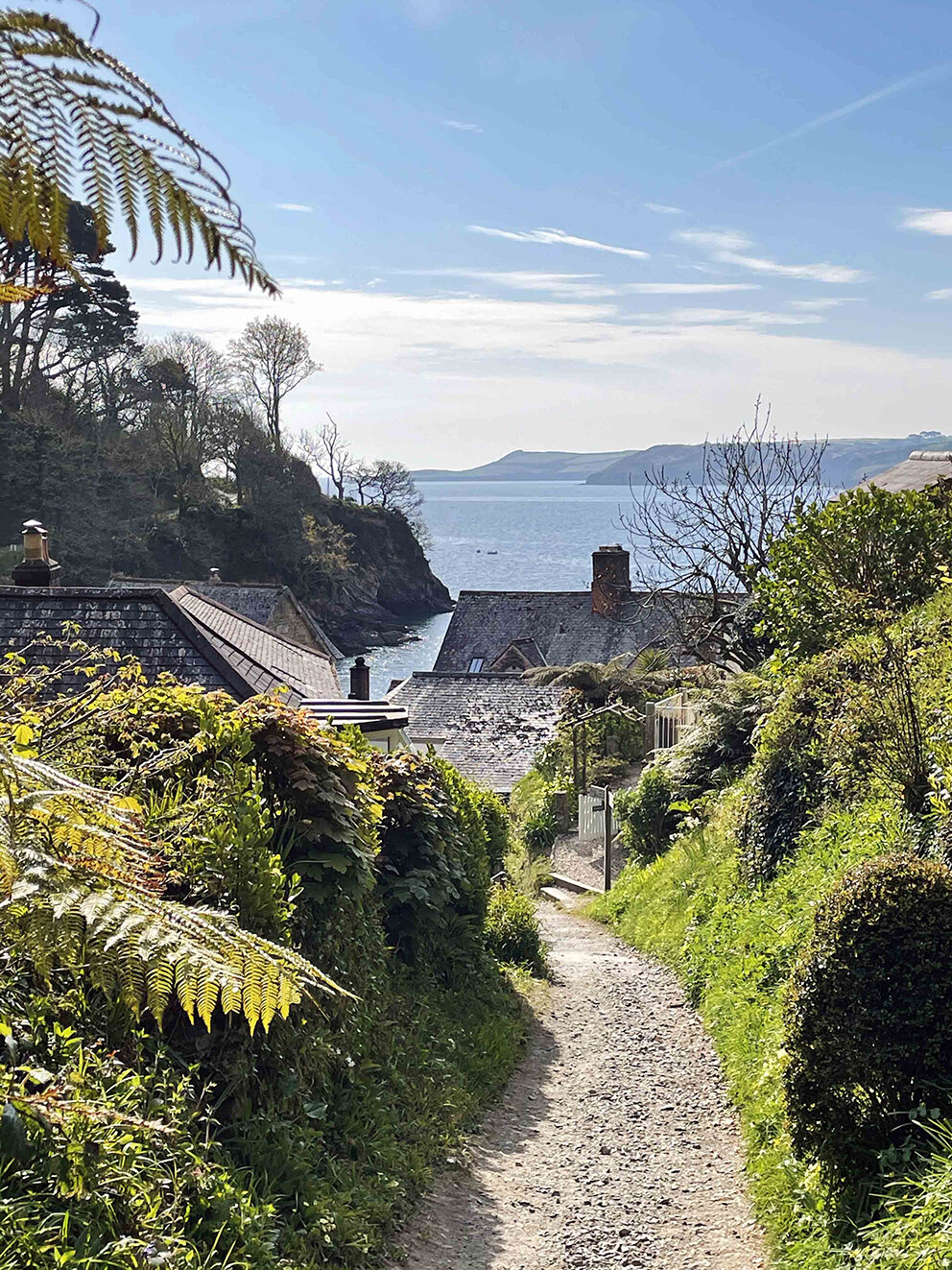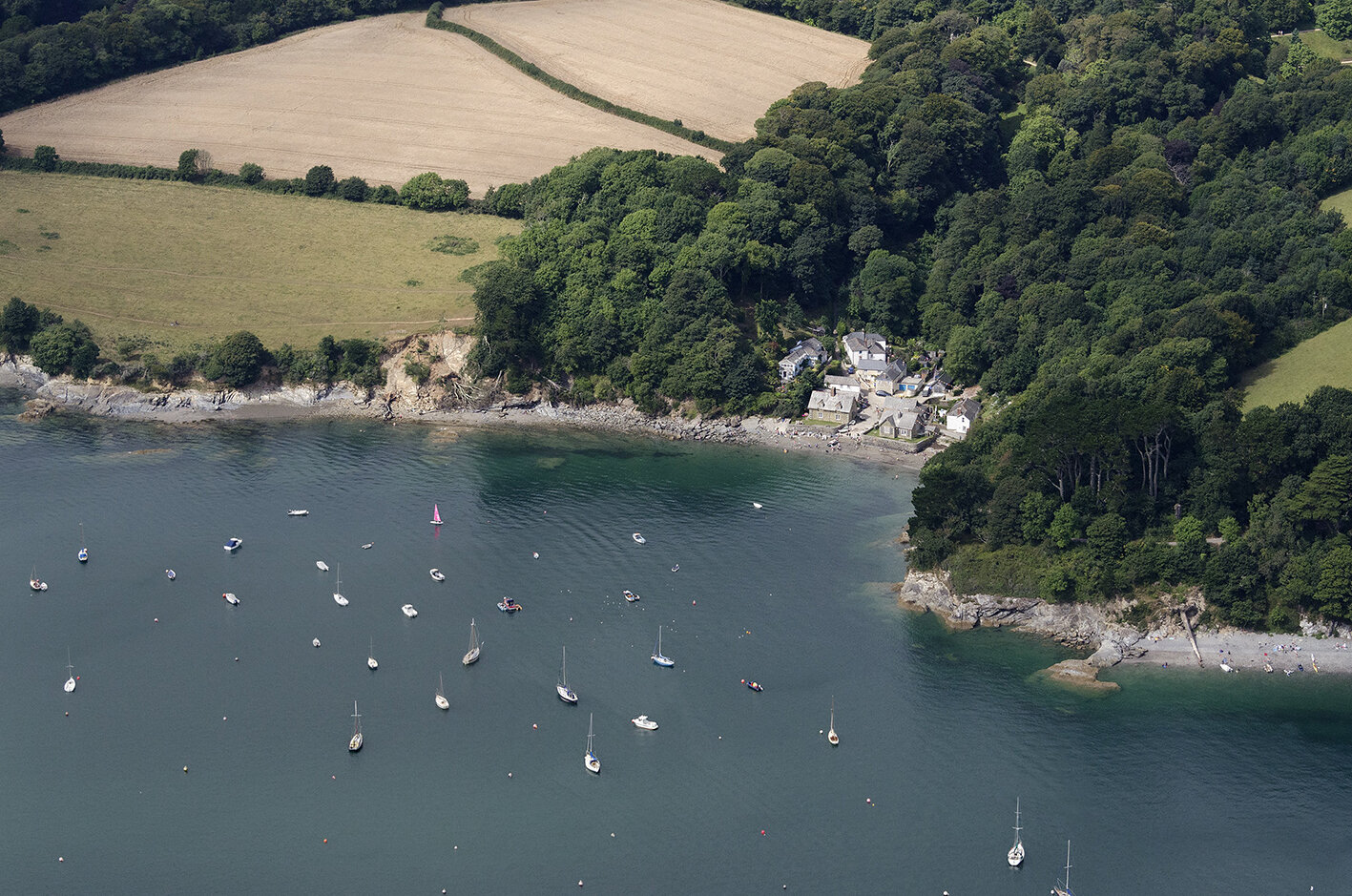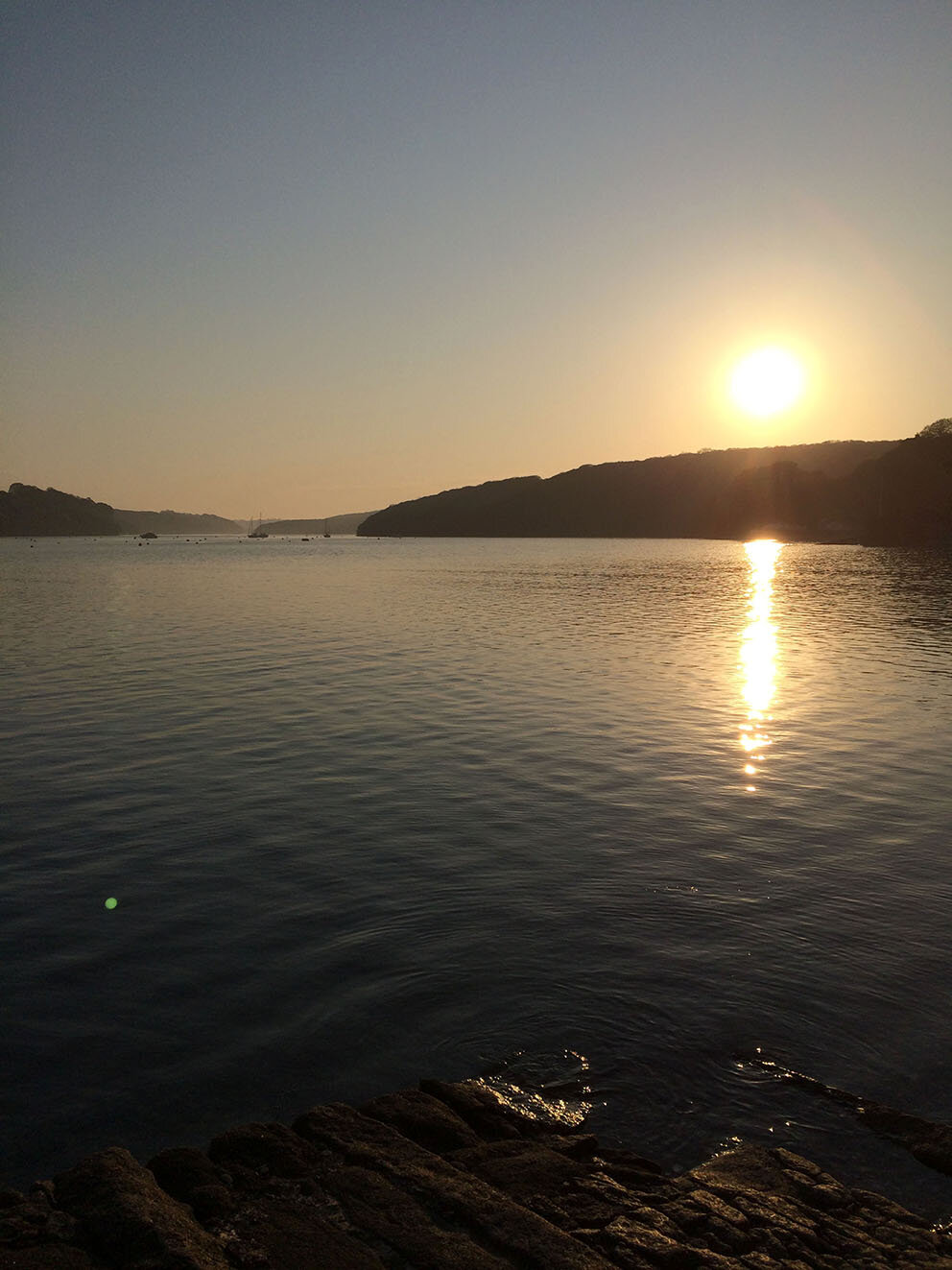Cornish Coast & Creek
Falmouth, Cornwall
Route by Matt Lowe, A Good Adventure
This is a great day-long adventure exploring the south Cornish coast to the south-west of cosmopolitan Falmouth and up the Helford River towards Daphne du Maurier’s famous Frenchman’s Creek. The complete route takes in three decent open-sea and river estuary swims with rambles between, exploring the lush beauty of the Helford River valley – all within Cornwall’s south-coast-western Area of Outstanding Natural Beauty. As a circular route you can jump on the bus back to the start, arrange transport or re-trace the coast path if you want an extra long day. You can also split this route into smaller trips based around each swim. The Porthnavas Creek swim-to-the-pub river swoosh is a great after-worker when the tides are right on long summer evenings.
Location: Falmouth to Helford Passage, Cornwall
Total distance: 14.2 km
Above distance (hike, run): 6 KM with bus /
11.5 KM WITHOUT Bus
Below distance (swim): 5.2 KM
A (start): Maenporth Beach, Falmouth
w3w.co/rinse.rush.glove
B (finish): Maenporth Beach (circular)
Duration: FULL Day trip. ALLOW 6HRS SWIM/HIKE
+ EXTRA FOR Lunch ANd PUb
Difficulty: BE Comfortable swimming 2 km
and confident IN your knowledge of the WEATHER AND WATER conditions ON THE DAY
OS MAP: 103 The Lizard, Falmouth & Helston
Before you set off, please read our safety guide and blog post on the risks of biosecurity. And here is our recommended kit list.
need to know
Start: directions and timings
The trip starts at Maenporth Beach, 3 miles from Falmouth. There’s a beach car park where for a couple of quid you can leave your vehicle for the day. Maenporth is an easy swim access sandy beach where the first swim starts.
Ideally time your day so the third swim is high to mid or mid to high tide. For example: start the first swim at 09:30 at Maenporth (with low water at 09:00); start Swim 2 around 13:30 and aim to be to Porthnavas Creek for the final swim by 15:30 (with a high water at 15:00). This gives you just enough time for a pint at the pub and to catch the last bus back at 18:33.
Terrain:
ABOVE: lovely walking along the beautiful South West Coast Path (SWCP) for the majority of the route with a few inland deviations along public footpaths which pass alongside two sub-tropical gardens.
BELOW: it’s sea and tidal river so the main thing to bear in mind is the wind, weather and swell conditions. The open sea swim from Maenporth is typically a nicely sheltered section of the south Cornish coast as the prevailing south west winds are blocked by the topography of the coastline. It can be a different story if there is a strong east or south-east wind blowing and not advised in these conditions.
Inside the Helford River there is little tidal flow to worry about for Swim 2 as the river is so wide here that you are really swimming along the edges of a very wide expanse of river-mouth. Swim 3 is more tide critical but can be completed with a fairly large tide window. Here you swim or ‘swoosh’ (on an outgoing tide) down a smaller tributary of the Helford where careful observation of river-craft is important. In other words: hug the left-bank of the river and watch out for boats!
Safety – extra things to look out for:
In addition to the weather, sea state, wind and tides; boat traffic in the summer months are the main concern. Be aware of jelly-fish in the summer too. Maenporth beach does not have a lifeguard service and once you have left the bay you will be on your own. Never swim alone, always carry a means of contacting help via mobile phone or VHF radio. The South West HM Coastguard is based at Pendennis Point in Falmouth and it’s good practise to inform them of the trip you are planning and your expected timings. A quick call on the day or day before is advised.
Extra kit:
Over and above the Above Below kit list. Here a safety whistle is advised if you get in trouble – the South West Coast Path runs close to most of the swims, where your most immediate help may well be walking along the coast path, especially at busier times of the year.
Highlights – the nice bits to look out for:
ABOVE: The view from the Trerose Estate – up the Helford River towards Frenchman’s Creek and Gweek to the west, the Lizard Peninsula spreading out to the south – is one of the most beautiful in Cornwall. Mawnan Church and church-yard is a special place to while away a lunchtime and feel away from it all.
BELOW: The Porthnavas Creek river swoosh is very special … as are all three swims!
Bonus: With the coastal path running alongside the route, it’s easy to make this more about swimming or walking with plenty of getting in and out points along the route. You can also split this route up and explore each part separately over several trips.
Getting there: Trains to Falmouth: Great Western Rail operate high speed services from London Paddington, South Wales and the Cotswolds to Cornwall, including sleeper services from London Paddington. Cross Country Trains (Arriva Trains) operate services into Cornwall from the Midlands, the North and Scotland. For further information contact National Rail Enquiries for train times/fare information on 08457 48 49 50.
OTS Falmouth (01326 378100) operates the local bus route 35 & 35A which you can use for a speedy return to Maenporth from Helford Passage. The 10 minute ride drops you close to a footpath – just a short walk back to the beach car park.
Kit: There is a general kit list and safety advice at the bottom of the page.
Local emergency numbers:
HM Falmouth Coastguard – worth letting them know what you are doing when you arrive. Phone 01326 317 575.
If you find yourself in an emergency situation or spot someone else in trouble, you should call 999 or 112 and ask for the coastguard.
Facilities:
Public Toilets: Maenporth Beach, Durgan Village, The Ferryboat Inn, Helford Passage
Pubs: The Red Lion at Mawnan Smith, The Ferryboat Inn at Helford Passage
Cafés & Restaurants: Maenporth Beach Cafe, The Cove at Maenporth, The Ferryboat Inn
Supplies: Falmouth town centre shops, The Village Shop at Mawnan Smith
DESCRIPTION
As a circular route you start the route at Maenporth beach car park near Falmouth – literally on the beach but far back enough to keep your car tyres dry. Check you have everything in order for the day with a cup of coffee at the beach cafe, buy any last minute supplies or top up on breakfast if you’ve left it late. The Cove restaurant is a pricer affair across the road from the car park – you can book supper for the end of the day here.
The route starts with the first of the three swims by heading out from Maenporth’s sandy bay in a southerly direction heading towards Rosemullion Head. This is a 2km swim – take your time and get into a rhythm or go slow, hug the coast and explore the caves, coves and small sandy beaches which you’ll see to your right all along this section of coast. On higher tides you can hear the gurgles and spit of several ‘blow holes’, in some of the deeper caves.
After 1.5km to your right you’ll see a larger sandy/rocky beach known as ‘Nansidwell’ or Bream Cove. You can exit here if you want a shorter swim and walk the extra along the coast path. The main swim route continues south past this beach, heading for ‘Rosemullion Head’ – a promontory jutting out to sea dead ahead of you. As you approach the headland you’ll see a small stile above the rocks. Just to left, on a low tide there will be a small section of rocky beach to scramble up towards the stile. This whole area is rocky at higher tide but exiting the water is fairly easy. Hop over the stile and change on the soft grass here.
This is Rosemullion Head – it’s a lovely peaceful spot if you are hungry enough for lunch already or just to warm up from the first long swim with a flask of something.
Follow the footpath out around the headland and on the far side either scramble across the rocks and down onto Prisk Cove on a lower tide; or continue along the main footpath through a couple of fields and head down a narrow cow track to the beach. Prisk Cove is usually a very quiet beach and a good spot for lunch and an explore of the rockpools. At the far end of the beach you will see the mouth of the Helford River and the Lizard peninsula on the far side.
About three-quarters of the way along the beach look for a narrow track on your right (which you may have already walked down) that leads back onto the main coast path and head south-west. The path bears westerly as you head into the mouth of the Helford River; below you will see rocky Parson’s Beach and through the woodland to your right you will glimpse Mawnan Church and graveyard – well worth a slight detour along another path which branches off to the right – to enjoy a sheltered packed-lunch (if you’ve saved any) on one of the old church benches. Listening to the birdsong and the sea – and hopefully with sunshine on your face – here you’ll feel completely removed from the freneticism of the daily-grind. See if you can spot the old pirates grave near the churchyard entrance archway before you leave.
From the church walk back down the path and re-join the coast path heading south-west. As you exit the wood, and going through a gate, the path opens-up onto the rolling fields of the Trerose Estate. The view from here looking up the Helford River valley is as magnificent as any in Cornwall. Walk across the fields towards the river and drop down the steep hill, through another gate, and you will arrive at a pretty little pebbly beach with a small boathouse on the far side – this is Porthallack – and the start of the second swim, so change and enter the water from the beach. This swim is roughly a kilometre. If you want a slightly shorter swim you can follow the footpath a little further and swim from the next bay – Porth Saxon.
This swim hugs the north bank of the Helford River which is wide at this point. In summer there may be boat traffic here so keep alert and regularly check for traffic. You are heading for Grebe beach which will be straight ahead of you to the west/north west. It’s a popular beach and you’ll spot the large fallen tree-trunk to the westerly end which makes it recognisable.
At Grebe get changed whilst admiring the beautiful surroundings and walk up the path from the beach. You will reach a small road which leads left and down into the tiny hamlet of Durgan Village. You can spend a little time exploring here – there’s a sandy beach, a small shop and a public loo.
The coast path diverts here – up through the back of the village – to avoid a landslide. Follow the path up into the woodland where you’ll skirt the the National Trust’s sub-tropical Glendurgan Garden. At the top of the hill you will come to a junction in the path where a sharp left returns the South West Coast Path to the river; or straight ahead a path leads inland towards the neighbouring sub-tropical garden of ‘Trebah’. Follow in the direction of Trebah; the footpath soon cuts through the grounds and car park of Trebah Garden. Follow the footpath until you reach the road.
You will see a junction to the left sign-posted ‘Helford Passage’ and ‘The Ferryboat Inn’. Walk across the junction and continue to the right along the main-road in the direction of ‘Port Navas’ and ‘Constantine’. The route tracks the road for a short while past the Budock Vean Hotel. A little further on past the houses you will see a footpath sign on the left at ‘Green Acre’. Walk down through the field on the footpath and at the bottom of the hill you will re-join the road and reach a creek with moored house-boats.
This is the head of Porthnavas Creek and the start of the third swim or river swoosh. Timed-well the tide will be full enough to enter the creek from the road for the final swim down the creek and around to the Ferryboat Inn on the main river. This is a ‘swoosh’ swim on an outgoing tide, ideally half an hour after high water. The swim is around 2.5k.
Change, pack your gear and ease into the creek from the road bank – or walk around onto the south bank of the creek if there is less tide – change by the boats and slide through the muddy bank into the creek. Swim past the boats to the west and after 400m or so you’ll see the vast water-fronted properties on your left. Known as Billionaires Row, these properties line the south-bank of Porthnavas Creek. After 800m or so, on the opposite bank you will see the large quay of Port Navas.
The creek by now has turned into a larger and potentially busy river with Port Navas having a yacht club, moorings and quay. Continue to hug the south-bank here to avoid any boat traffic. The creek turns to the south as you continue swimming, past the gardens of the Budock Vean Hotel on the left; between boat moorings and out towards the main Helford River. The creek meets the river at ‘Pedn Billy’ point – be aware of boat traffic and river users and shallow water over the rocks to your left – these can be covered with sharp barnacles and it can be surprisingly shallow. The flow of the confluence here can be felt at times but won’t cause you any problems.
Once out into the main Helford River the swim heads easterly back towards Helford Passage. Again keep tight to the left bank to avoid other water users. After 300m or so you will see a pebbly stretch of beach – Bar Beach – you can exit the water here if you are tired or swim-on past the rocks for the final 500m of the swim to the Ferryboat Inn.
You will soon see the boats and busyness of Helford Passage and the pub. Keep left: this is a popular location along with boat traffic and a ferry which runs across to Helford Village on the opposite side of the river. Be aware and keep away from the floating pontoon. Exit the water on the beach to the left of the pub.
Change and grab a table out front if you can. A decent pint of Tribute is the reward for your long swim! The Ferryboat does great food so you could plan your evening meal here.
Fully-sated and ready for the trip back – turn left leaving the pub and walk-up the road and very steep hill towards the junction with the main road which you crossed earlier on the way down to Portnavas Creek. Just before the junction on the right-hand side you will see the bus-stop for the 35/35A. The 35 runs hourly mon-sat, with the last bus at 18:33 (check the link to the timetable for more details). If you miss the bus or prefer to walk you can re-trace your steps all the way back along the coast path – it will be a good few hours walk back to Maenporth. You could plan ahead and leave a car at both ends; or call a taxi … or hitch.
Once on the bus ask the driver for the ‘Chapel Town Close’ stop. The number 35 winds back along the main road past the sub-tropical gardens and on through the village of Mawnan Smith, towards Falmouth. At ‘Chapel Town Close’ leave the bus, cross over the road and walk a little way back along the bus route. Turn first left into Carlidnack Lane. Follow this small road down the hill almost as far as you can go and you will see a footpath sign and stile on the right. This leads you onto a path through a field, over a little stream and through another stile into another field. Turn left after the stile instead of heading up the grassy hill. Follow the path along the edge of the field until you reach a gate on the edge of the woodland. Follow the path through the wood keeping left and after 10 minutes or so you will pop out onto the road at Maenporth and the beach car park where you started the day.
your guide
Want to give this route a go, but not ready to go it alone?
Get in touch with local resident and swim guide Matt Lowe, 07746127285.
Based in Falmouth, Cornwall, Matt is a keen surfer, fisherman, runner and regular outdoor swimmer. As an SLSGB (Surf Life Saving Great Britain) qualified Beach Lifeguard, Matt forms part of our water safety team and has led groups on many of our events, from The Swimmer in London through to our RuckRaft Retreats in Devon and The Lake District.
Matt uses his RuckRaft to explore the coast and creeks of Cornwall, often wild camping on remote beaches along the way. His wild and wonderful route showcases the best of his local area. Expect good company, expert local knowledge and damn fine coffee made on the go.
All our local guides are qualified lifeguards or swimguides with first-hand experience of the route.

